Fiat 500 Nuova (1957-1975) - The Buying Guide
The classic Fiat 500 is an icon of Italian motoring, if not an icon at all. Now a collector's item, it is back in the garages of enthusiasts. Here's an overview of the Fiat 500 Nuova: what it is, what to look out for when buying it, and its ratings.
par TeamBenzin
If you think of an Italian car, you'll probably think either of a red Ferrari or a classic Fiat 500, known as the 'Nuova'. The iconic status of this little city car, which has sold 3.5 million units over its almost 20-year career, is clear for all to see.
It's hardly surprising, given its many qualities. Its appealing looks, simple design and low price make it an ideal entry point into the world of classic cars for all enthusiasts.
The only problem is that Fiat 500 Nuova cars can be found on the second-hand market in all models, all states and all prices. So we've compiled a little guide to help you find your ideal 500 and browse the classified ads like a pro.
A, B, C... R? Finding your way around the Fiat 500 models
Over the course of its long career, the Fiat 500 'Nuova' has been given a number of different names, which can quickly become confusing. Let's keep things simple: each letter corresponds to a version, which appeared one after the other, each with its own set of modifications. Here's the list:
500 A (1957-1958)
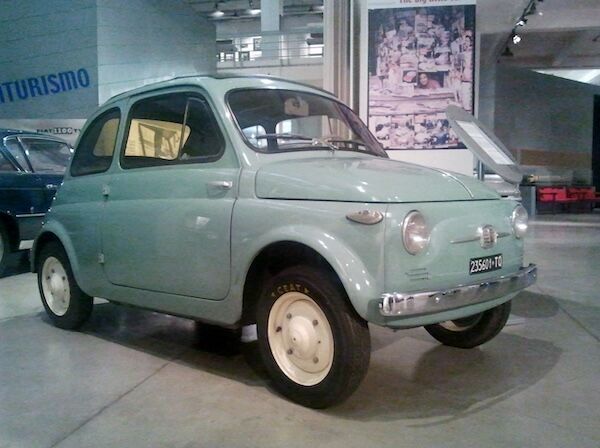
Distinctive features Almond-shaped turn indicators and moustache air intakes at the front, fixed windows on the first series, and doors that open in opposite directions (known as "suicide" doors).
Engine 479cc, 13hp (first series) then 15hp ('Economy' and 'Normal' versions)
Production : Env. 50.000 ex
500 B "Sport" (1958-1960)
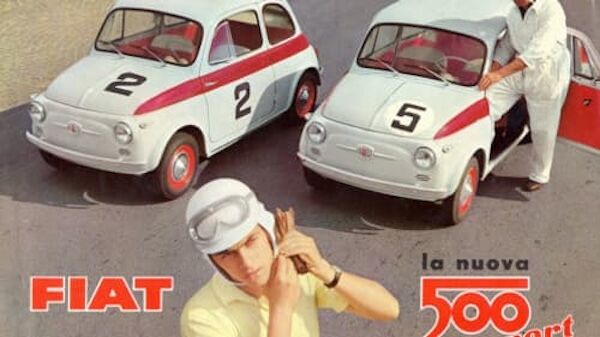
Distinctive features Sheet metal roof as standard, white with red side stripes
Engine : 499.5cc, 21cv
Production : Env. 10.000 ex
500 C "Tetto Apribile" (1959-1960)
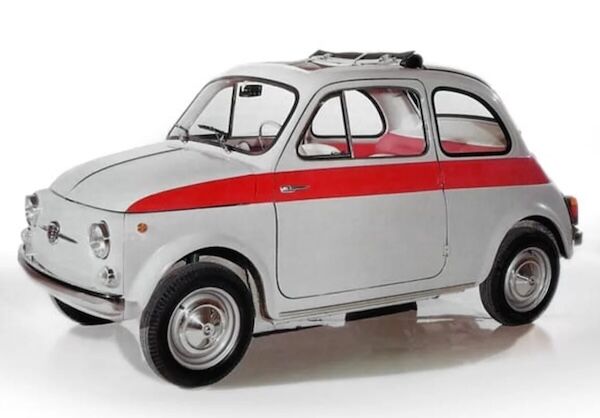
Distinctive features Canvas sunroof, round indicators under the headlights with repeaters on the wings
Engine 479cc, 16.5cv
Production : Env. 120.000 ex
500 D (1960-1965)
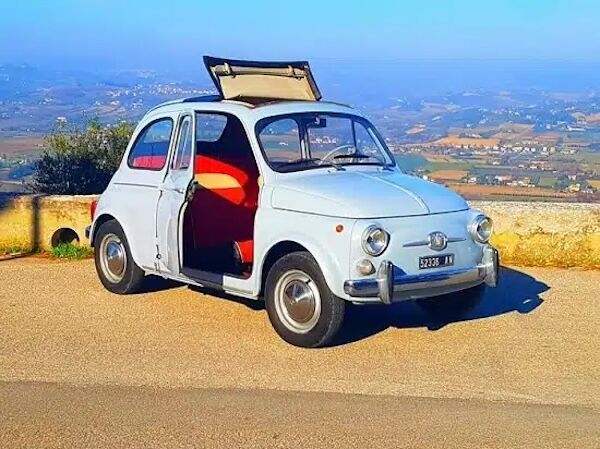
Distinctive features 22-litre fuel tank, sun visors, folding rear bench seat
Engine : 499.5cc, 17.5cv
Production : Env. 640.000 ex
500 F (1965-1968)

Distinctive features Normal" opening doors, enlarged windscreen, removal of bonnet trim, 120km/h speedometer
Engine : 499.5cc, 18cv
Production : Env. 1.000.000 ex
500 L 'Luxury' (1968-1972)
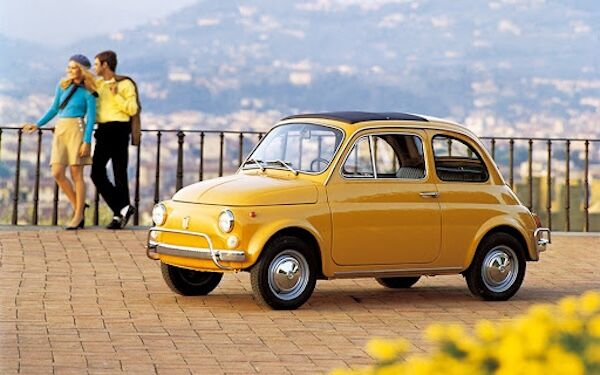
Distinctive features New bumper guard extending up to the new rectangular logo, additional chrome mouldings, rectangular 130km/h speedometer, matt black dashboard and sports steering wheel, new colours (yellow and black).
Engine : 499.5cc, 18cv
Production : Env. 1.400.000 ex
500 R " Rinnovata " (1972-1975)

Distinctive features New Fiat logo on the front, steel wheels without Fiat 126 hubcaps.
Engine : 594cc, 18hp
Production : Env. 160.000 ex
Common problems with the Fiat 500
The Fiat 500 Nuova has one major advantage: a very simple design and wide distribution. As a direct result, its mechanics are tried and tested and reliable, and maintenance and repairs are simple, thanks in particular to an abundance of inexpensive parts. One major concern remained, however: corrosion. The steel used at the time was neither of good quality, nor did it benefit from effective anti-corrosion treatments. Here's a quick overview of the problems encountered:
Mechanical engineering
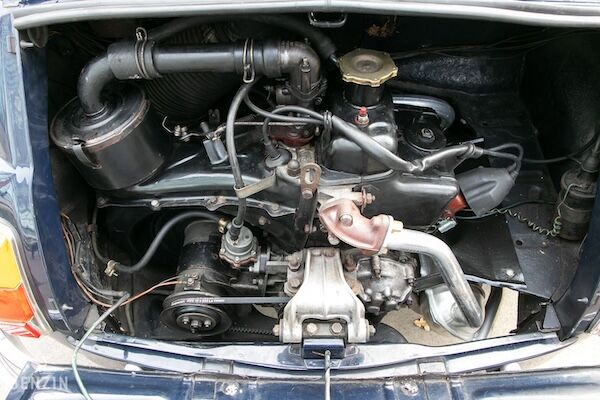
The two-cylinder engine will not shine for its sound, balance or power. It is, however, very reliable, and its inspection can be summed up in three criteria: its tightness, its smoke and its operating temperature. An engine that shows few leaks, emits no smoke (especially blue smoke) and does not overheat can be considered to be in good condition.
Rolling stock
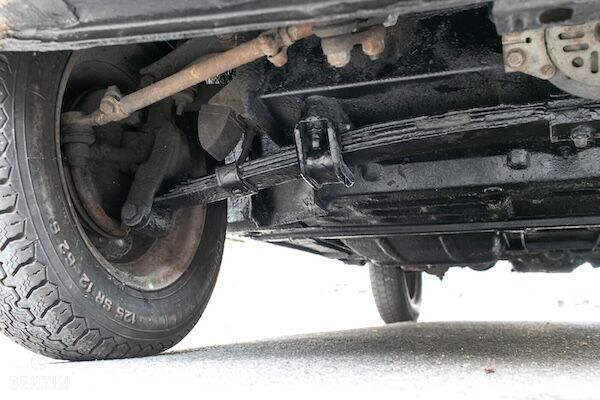
Simplicity is another of the 500's strengths. The drum brake system is simple and inexpensive to maintain. If the car brakes straight and no fluid leaks are detected, the braking system is good. The play in the steering should be checked, and if it seems abnormal then the steering ball joints should be replaced. Finally, check that the car has a normal ride (that it doesn't lean), even if the leaf suspension at the front is strong and the springs at the rear are cheap to change.
Carrosserie

This is where vigilance is called for. The front floorboards are the main victims of corrosion. Check their condition from below and above, under the carpets. Next, check the battery box at the front. Finally, inspect the wings and door sills, which are also very often signs of corrosion.
How much is a Fiat 500 Nuova worth?
Each generation of 500 has its own advantages and disadvantages. The older series have an added old-world charm, such as the use of more noble materials (plastic having gradually been invited on board) and greater rarity. The more recent models offer a more comprehensive range of equipment and a slightly more determined mechanical design.
So, choosing a model will remain mainly a matter of taste, and prices vary very little from one model to another, except for the first series (up to model D) which will require a higher budget due to their rarity.
Here is an estimate of the current prices, based on auction results:
Fiat 500 A
To restore: 10.000€
Average condition: €15,000
Good condition: €20,000
Perfect condition: €25,000
Fiat 500 B
To restore: € 20,000
Average condition: €30,000
Good condition: €40,000
Perfect condition: €50,000
Fiat 500 C-D
To restore: € 6,000
Average condition: €8,500
Good condition: €12,000
Perfect condition: €16,000
Fiat 500 F-L-R
To restore: 3.000€
Average condition: €5,500
Good condition: €8,000
Perfect condition: €14,000
Où acheter une Fiat 500 Nuova ?
Benzin regularly offers classic Fiat 500 Nuova cars for sale. Many models are available, in various states of repair and at all prices, so you can find the 500 that's right for you.
The many photos allow you to inspect the bodywork and general condition in detail. Videos are also a good way of checking the car's mechanical condition. Finally, you can buy your 500 at the right price, thanks to a transparent auction system.
See all ads from Fiat 500 on Benzin






 English
English
 Italiano
Italiano
 Deutsch
Deutsch
 Magyar
Magyar

Annonces